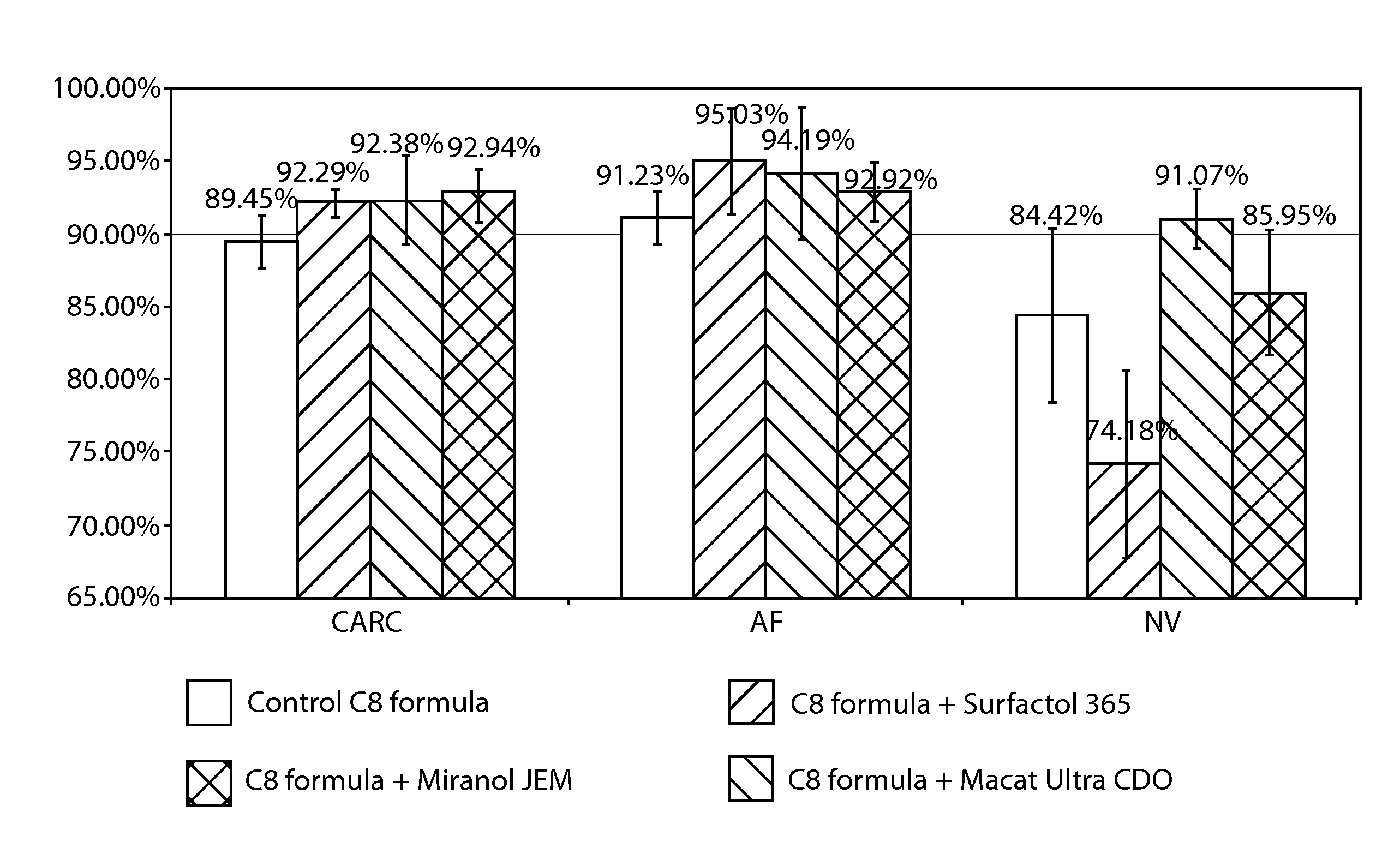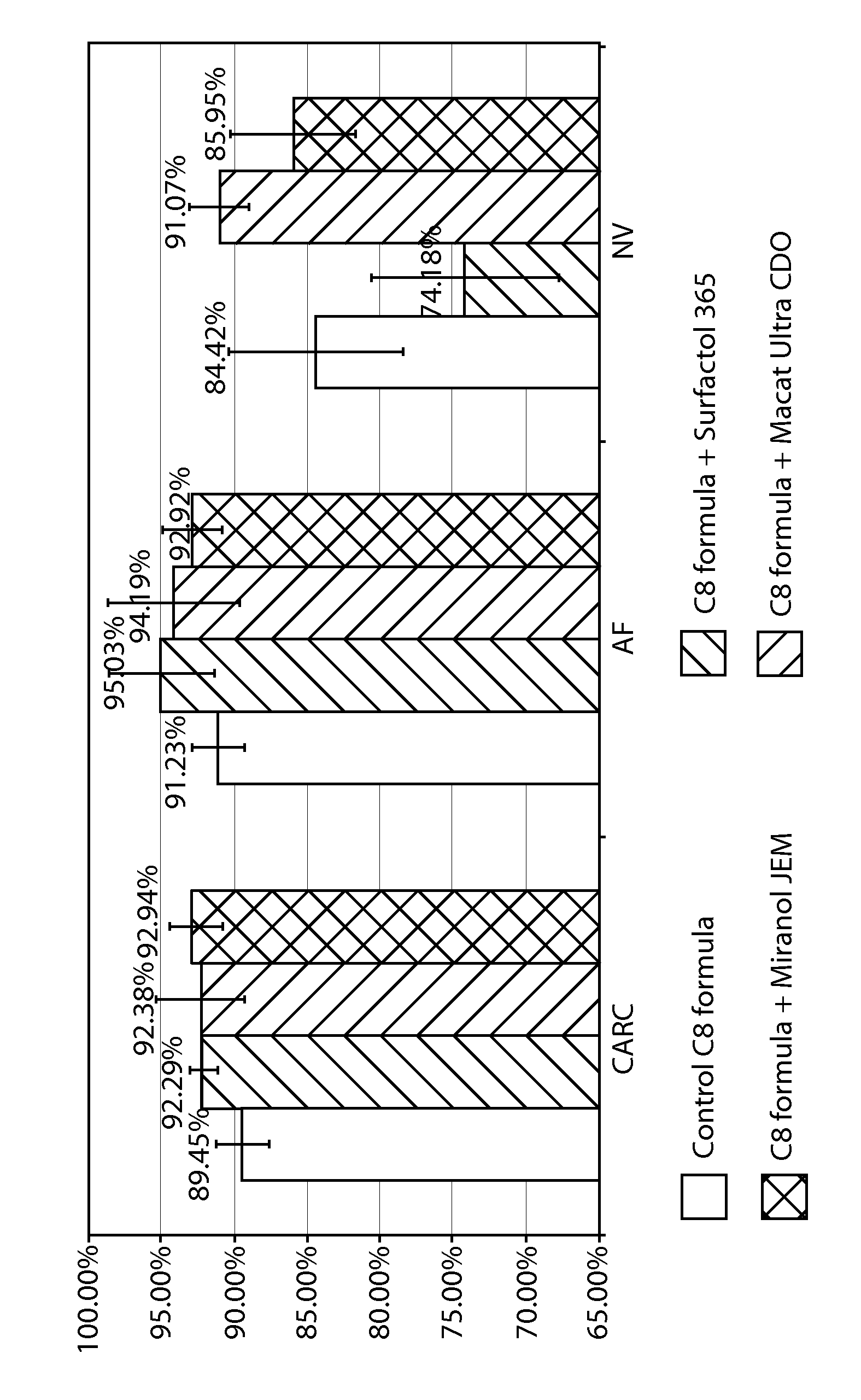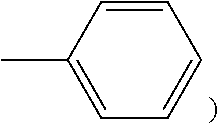Surfactant composition and method for decontamination
a technology of surfactant composition and decontamination, which is applied in the direction of colloidal chemistry, detergent compounding agent, and ampholytes/electroneutral surface active compounds, etc., which can solve the problems of ineffective field development or development of dual-use soaps
- Summary
- Abstract
- Description
- Claims
- Application Information
AI Technical Summary
Benefits of technology
Problems solved by technology
Method used
Image
Examples
example 1
Removal of Chemical Warfare Simulants with Cleaning Compositions
[0040]Experimental Protocol.
[0041]The ability of various cleaning compositions to clean exterior surfaces of a vehicle by removing chemical warfare agents was studied. More particularly, the ability of various chemical cleaning compositions to clean a variety of exterior surfaces of a military vehicle by removing chemical warfare simulants was studied.
[0042]The cleaning compositions employed were as follows: 1) Control C8 Formula; 2) C8 Formula+Surfactol® 365; 3) C8 Formula+Macat® Ultra CDO; and 4) C8 Formula+Miranol® JEM. The cleaning compositions employed are respectfully set forth in Tables III-VI below.
[0043]
TABLE IIIControl C8 FormulaActivityWeight (g) forComponentManufacturer(%)500 mL SolutionLinear, C12 secondaryDow Chemical1005.0alcohol alkoxylateCompany(Tergitol ™ 15-S-9)(Midland, MI)Polyoxyethylene (4)Croda (Edison,1005.0Sorbitan MonolaurateNJ)(Tween ® 21)OctyldimethylamineRhodia4112.2Oxide (Mackamine C8)(Cran...
example 2
Effect of Various Concentrations of C8 Formula+Macat® Ultra CDO Cleaning Compositions with Corrosion Inhibitors on the Removal of CEPS
[0054]Experimental Protocol.
[0055]The ability of various cleaning compositions to clean exterior surfaces of a vehicle by removing chemical warfare agents will be studied. More particularly, the ability of various concentrations of a chemical cleaning composition to clean a variety of exterior surfaces of a vehicle by removing chemical warfare simulants will be studied.
[0056]The cleaning compositions to be employed in this study are as previously set forth in Table I and as set forth in Tables VII-IX below. The composition set forth in Table I will serve as a control. The cleaning compositions will be prepared in accordance with the procedure as previously discussed with regard to the cleaning compositions set forth in Table III-VI in Example I, except that the procedure will include the additional step of adding Sodium Nitrite and Sodium Metasilicate...
example 3
Effect of the C8-18 Alkyl Polyethylene Glycol Sorbitan Fatty Ester Surfactant Cleaning Compositions on Removal of CEPS
[0063]Experimental Protocol.
[0064]The ability of cleaning compositions to clean exterior surfaces of a vehicle by removing chemical warfare agents will be studied. More particularly, the ability of cleaning compositions containing polyoxyethylene (20) sorbitan monopalmitate (polysorbate 40) to remove chemical warfare simulants from exterior surfaces of a vehicle will be studied.
[0065]The cleaning compositions to be employed in this study are as previously set forth in Table I and as set forth in Table X below. The composition set forth in Table I will serve as a control. The cleaning compositions will be prepared in accordance with the procedure as previously discussed with regard to the cleaning compositions set forth in Table III-VI in Example I, except that: 1) with regard to the cleaning composition set forth in Table X, polyoxyethylene (20) sorbitan monopalmitat...
PUM
| Property | Measurement | Unit |
|---|---|---|
| pressure | aaaaa | aaaaa |
| pressure | aaaaa | aaaaa |
| chemical structure | aaaaa | aaaaa |
Abstract
Description
Claims
Application Information
 Login to View More
Login to View More - R&D
- Intellectual Property
- Life Sciences
- Materials
- Tech Scout
- Unparalleled Data Quality
- Higher Quality Content
- 60% Fewer Hallucinations
Browse by: Latest US Patents, China's latest patents, Technical Efficacy Thesaurus, Application Domain, Technology Topic, Popular Technical Reports.
© 2025 PatSnap. All rights reserved.Legal|Privacy policy|Modern Slavery Act Transparency Statement|Sitemap|About US| Contact US: help@patsnap.com



